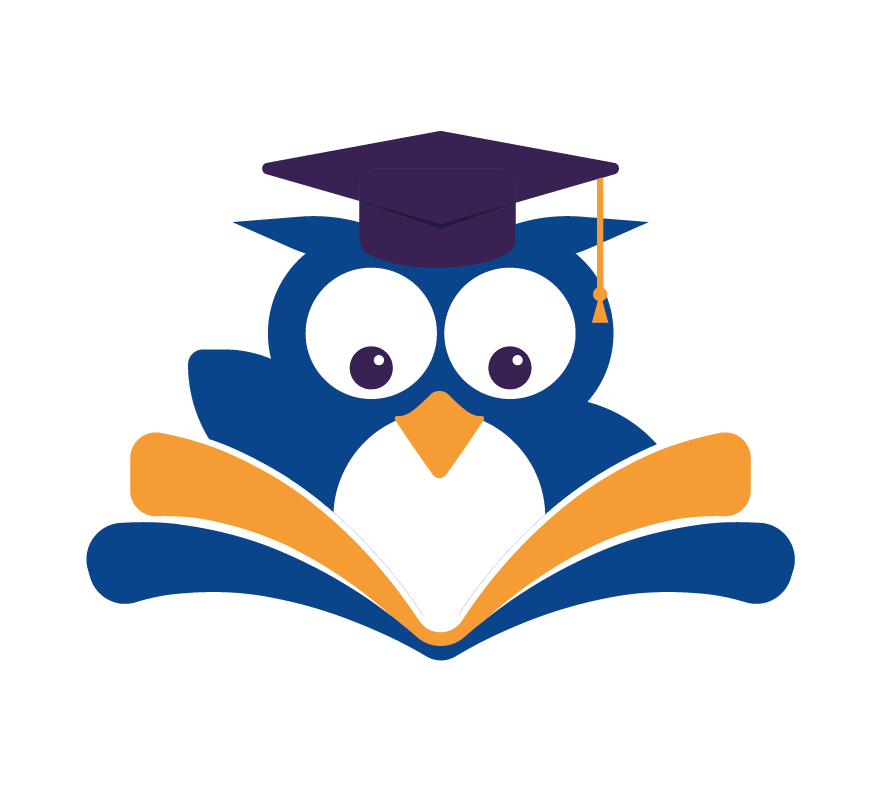Ever thought about learning without the struggle? Imagine soaking up information like a sponge, without feeling tired or stressed. It sounds like a dream, right?
But it’s not just a dream. It’s a reality you can achieve with “study on autopilot.” This idea makes learning effortless and fun.
Mastering effortless learning means no more boring study sessions. Say hello to a more productive, stress-free way of learning. In this article, we’ll show you how to make it happen.
Key Takeaways
- Discover the concept of “study on autopilot” and its benefits.
- Learn how to transform your learning experience into an enjoyable process.
- Understand the importance of making learning feel effortless.
- Explore practical methods to achieve effortless learning.
- Find out how to stay motivated and engaged in your learning journey.
The Science Behind Effortless Learning
To master effortless learning, we need to explore the science behind it. Understanding how our brain handles information is key. This knowledge helps us use efficient learning techniques that make learning easy.
How Your Brain Processes Information
Our brains process information in a unique way. When we learn something new, it goes to our working memory. There, it’s either kept or thrown away. The secret to a great learning experience is managing this process well.
The Cognitive Load Theory Explained
The Cognitive Load Theory says our working memory has a limit. To learn well, we must handle this load. We do this by breaking down big info into small bits and using spaced repetition.
| Technique | Description | Benefit |
|---|---|---|
| Chunking | Breaking down information into smaller pieces | Reduces cognitive overload |
| Spaced Repetition | Reviewing material at optimal intervals | Enhances long-term retention |
Neuroplasticity: Your Brain’s Natural Learning Ability
Neuroplasticity is the brain’s power to change and adapt. It lets us learn and grow all our lives. This makes it a key part of efficient learning techniques.
Study on Autopilot: How to Make Learning Feel Effortless
Imagine learning new things without the usual struggle. That’s what autopilot learning strategies offer. They help you learn more with less stress.
Defining the Autopilot Learning State
The autopilot learning state means learning without feeling forced. It’s about making learning feel natural.
The Difference Between Effortless and Lazy Learning
It’s key to know the difference between effortless learning and being lazy. Effortless learning is smart work. It uses strategies that help you remember and understand with less effort.
- Focus on understanding rather than just memorizing
- Use active recall techniques to reinforce learning
- Apply spaced repetition to optimize memory retention
The Psychology of Reduced Mental Resistance
Reducing mental resistance is key for effortless learning. It’s about understanding why we sometimes struggle to learn.
Breaking the Struggle-Learning Connection
We often see learning as a struggle. But, by changing how we approach it, we can break this mindset. Mindfulness and breaking down complex topics help.
Identifying Your Personal Learning Thresholds
Everyone learns differently. Knowing your own learning style helps you study better.
By using these tips, you can learn on autopilot. This makes learning feel effortless and fun.
Preparing Your Mind for Autopilot Learning
Effortless learning begins with a prepared mind. Let’s explore how to get there. To maximize autopilot learning, you must create a mental state that supports focus and productivity.
Creating the Optimal Mental State
Your mental state is key to learning well. A calm and focused mind helps you absorb and keep information better. Practices like deep breathing and meditation can sharpen your concentration and lower stress.
5-Minute Mindfulness Techniques for Enhanced Focus
Here are some easy yet effective mindfulness techniques to boost your focus:
- Deep breathing exercises
- Body scan meditation
- Mindful walking
Visualization Exercises for Learning Success
Visualization is a strong tool for learning success. Imagining yourself achieving your goals can increase motivation and confidence. Spend a few minutes each day visualizing your learning success.
| Mindfulness Technique | Duration | Benefit |
|---|---|---|
| Deep Breathing | 2 minutes | Reduces stress |
| Body Scan | 3 minutes | Improves focus |
| Mindful Walking | 5 minutes | Boosts creativity |
Setting Up Your Physical Environment
To study on autopilot, you need a supportive environment. This means creating a space that helps you focus and keeps distractions away.
Designing a Distraction-Free Study Space
A clean and quiet area is key for learning well. Think about using noise-cancelling headphones or soft music to set the mood.
Ergonomics for Extended Learning Sessions
A comfy chair and desk are crucial. Good ergonomics help you stay focused during long study times.
Essential Tools for Streamlined Learning
The right tools can make studying better. Let’s look at some options:
Digital vs. Analog Study Tools
Some like digital tools like apps and e-books. Others prefer old-school methods like pens and paper. Try different things to see what works for you. As an expert says,
“The best tool is the one you’ll actually use.”
By setting up your space right, you’ll get better at effortless learning.
The Power of Spaced Repetition Systems
Spaced repetition can make learning easy and fun. It’s a method that helps you remember lots of things without much effort. This technique automates how you remember information.
Automating Memory Formation
Spaced repetition reviews material at longer intervals. This helps solidify it in your long-term memory. It uses the psychological spacing effect to improve memory retention.
Setting Up Digital Tools
Anki and Quizlet make spaced repetition easy. These tools let you create digital flashcards. They automate the review process, saving you time.
Creating Your Own Customized Review Schedule
Digital tools help, but a custom schedule can make learning better. Tailoring review intervals to the subject can improve retention and reduce study time.
Optimizing Review Intervals for Different Subjects
Subjects need different review times. For example, math might need more frequent checks than history. Here’s a look at review times for various subjects:
| Subject | Initial Review | Subsequent Reviews |
|---|---|---|
| Mathematics | 1 day | 1 week, 1 month |
| History | 3 days | 2 weeks, 3 months |
| Languages | 1 day | 1 week, 2 months |
Adjusting your review schedule for each subject can enhance spaced repetition. This leads to efficient learning techniques.
Leveraging Technology for Automated Learning
Using technology can change how you learn, making it better and more fun. By adding the right digital tools to your study plan, you can automate learning. This frees up time for more important things.
AI-Powered Learning Assistants Worth Using
Bookvo’s AI Assistant and similar tools offer learning experiences made just for you. They help you stay on schedule, give feedback right away, and adjust to how fast you learn.
Apps That Optimize Your Study Schedule
Many apps help you manage your study time better. They let you sort tasks, set reminders, and keep a steady study schedule.
| App | Feature | Benefit |
|---|---|---|
| Trello | Kanban boards | Visual organization of tasks |
| Forest | Pomodoro timer | Enhanced focus and productivity |
| Any.do | Task management | Efficient scheduling and reminders |
Digital Note-Taking Systems That Organize for You
Evernote and OneNote make organizing your notes easy. They have features like tags, search, and syncing across devices.
Setting Up Automated Knowledge Management
To create an automated knowledge system, pick a digital note-taking tool that suits you. Organize your notes into groups, use tags for quick searches, and sync across devices. This lets you access your notes from anywhere, anytime.

The Flow State: Your Learning Superpower
Imagine being fully absorbed in your studies, with time flying by and your mind sharp. This is the power of flow state. It’s a mental state where you’re fully engaged in what you’re doing. It’s a key part of an optimal learning experience.
When you’re in flow, you’re not just learning. You’re fully immersed, with a heightened sense of focus and productivity.
Practical Triggers for Entering Flow During Study
To enter the flow state, you need to find the right balance. Here are some practical triggers to help you get started:
- Set clear, achievable goals for each study session
- Eliminate distractions by creating a conducive study environment
- Use the Pomodoro Technique to work in focused intervals
Maintaining Flow for Extended Periods
To keep flow going, it’s key to know the 90-Minute Cycle of productivity. Research shows our brains can focus for about 90 minutes before needing a break. Here’s a table showing how to work with your brain’s natural rhythm:
| Time | Activity |
|---|---|
| 0-90 minutes | Focused study session |
| 90-120 minutes | Break or relaxation |
By understanding and using the flow state, you can greatly improve your learning. Adding these efficient learning techniques to your daily routine can lead to amazing improvements in your productivity and learning experience.
Memory Techniques That Work While You Sleep
Learning doesn’t stop when we sleep. Our brains keep working on memories. The right techniques can make sleep a powerful tool for learning.
Pre-Sleep Learning Rituals That Enhance Retention
Starting a bedtime routine can boost memory. Try reviewing the day’s lessons, writing down key concepts in a journal, or listening to soothing music.
The Science of Sleep Consolidation
Sleep is key for memory, as it strengthens learning connections. Here’s how sleep stages affect memory:
| Sleep Stage | Impact on Memory |
|---|---|
| Non-REM Sleep | Initial processing and storage |
| REM Sleep | Information consolidation and integration |
Creating a Sleep Schedule That Maximizes Learning
For better learning, a good sleep schedule is crucial. Go to bed and wake up at the same time. Aim for 7-9 hours of sleep each night.
Building Effortless Study Habits
Unlocking effortless learning starts with building habits that support your goals. These habits should not need constant motivation. By making a study routine automatic, you can progress towards your goals even when you don’t feel like it.
The Habit Loop: Cue, Routine, Reward for Learning
The habit loop is a powerful tool for creating lasting study habits. It has a cue that starts the habit, the routine or behavior itself, and a reward that makes you want to do it again. For example, you might study at the same time every day. After reviewing your notes, you reward yourself with a short break.
Micro-Habits That Compound Over Time
Micro-habits are small, manageable behaviors that can make a big difference over time. They include dedicating 10 minutes a day to vocabulary building or practicing a new skill for 5 minutes each morning. These small habits can be combined to create a strong study routine.
| Micro-Habit | Time Commitment | Benefit |
|---|---|---|
| Daily Vocabulary Building | 10 minutes | Improved comprehension |
| Morning Skill Practice | 5 minutes | Enhanced proficiency |
| Evening Review | 15 minutes | Better retention |
Habit Stacking: Attaching Learning to Existing Routines
Habit stacking means adding new habits to routines you already have. For example, if you always drink coffee in the morning, you can add a new habit like reviewing your notes or listening to a study podcast while you enjoy your coffee.
Using Habit Tracking Apps Effectively
Habit tracking apps can help keep your study habits on track. They let you track your progress, set reminders, and earn rewards for staying consistent. Popular apps include Habitica, HabitBull, and Loop Habit Tracker.

Overcoming Common Obstacles to Autopilot Learning
Learning on autopilot is very effective, but it comes with challenges. Let’s look at how to beat them. You’ll face issues like procrastination, too much information, and hitting a learning wall.
Automating Your Response to Procrastination
Procrastination is a big hurdle. To beat it, make a “stop doing” list. Find tasks that make you procrastinate and swap them for better habits.
Managing Information Overload With Filters
There’s so much info out there, it’s easy to feel lost. Use filters like prioritizing and the Eisenhower Matrix. They help you focus on what really matters.
Breaking Through Learning Plateaus
Learning plateaus can be tough. To get past them, try changing your study spot or method. Sometimes, a new way of learning is all you need.
When to Push vs. When to Rest
Knowing when to keep going and when to rest is key. Pay attention to your body and mind. If you’re feeling exhausted, it’s time to take a break.
Real-World Applications of Autopilot Learning
Autopilot learning is more than just a theory. It’s a real tool for learning in many areas. It helps people get the best learning experience in different situations.
College and Academic Settings
In schools, autopilot learning makes studying easier. Students use spaced repetition and digital tools. This helps them remember and understand hard subjects better.
Professional Development and Career Advancement
Professionals can also use autopilot learning. It helps them keep up with new trends and skills. This way, they can move up in their careers.
Lifelong Learning for Personal Growth
Autopilot learning makes learning new things easier. It helps people grow and stay active in their minds.
| Application Area | Autopilot Learning Techniques | Benefits |
|---|---|---|
| Academic Settings | Spaced repetition, digital tools | Improved retention, better grades |
| Professional Development | AI-powered learning, optimized schedules | Career advancement, skill enhancement |
| Lifelong Learning | Micro-habits, habit stacking | Personal growth, continuous learning |
Using autopilot learning techniques makes learning more efficient. It leads to easier studying and a more rewarding educational or career path.
Conclusion: Your Journey to Effortless Mastery
We’ve looked into the science of effortless learning and shared ways to make studying easy. By using the strategies from this article, you can change how you learn. You’ll find mastering new things becomes simple.
We talked about getting your mind ready for learning on autopilot. We also covered how to set up a good study space and use tech to help you learn. Plus, we explored spaced repetition, the flow state, and memory techniques that work while you sleep.
Keep going on your path to effortless mastery. The most important thing is to stay consistent and patient. Start by adding one or two new techniques to your daily routine. Soon, you’ll see a big change in how you learn. With these tips, reaching your goals will be easy. We’re excited to see how far you’ll go.

